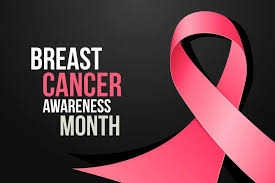By: Victoria Shelton
October is breast cancer awareness month. Although commonly thought of as a disease that only affects women, men can develop breast cancer as well, though it is less common.
The Side-Out Foundation was founded by Rick Dunetz after his mother was diagnosed with stage IV breast cancer. The name for this organization comes from the term “side-out” which is used in volleyball to mean to regain control of the ball. The goal of this organization is to help cancer patients regain control of their lives by conducting research into the disease. One notable statistic found through their research, “It is estimated that 1 in 8 women will develop breast cancer at one point during her lifetime, 30% or 1 in 3 of these women will go on to develop metastatic disease”.
The American Cancer Society estimated for 2020, “Breast cancer is about 100 times less common among white men than among white women. It is about 70 times less common among Black men than Black women. Similarly with Black women, Black men with breast cancer tend to have a worse prognosis (outlook). For men, the lifetime risk of getting breast cancer is about 1 in 833”.
Ashley Underwood, a Registered Nurse and Nursing Instructor At Vol State listed some signs people can look for, although it is important to note that not everyone will show signs.
“There are a lot of signs and symptoms of breast cancer. Any lump, bump, or suspicious area in the breast tissue should be followed closely and a licensed medical professional should be consulted. These lumps can change size and consistency as the disease progresses. They can begin as soft, compressible, mobile masses that feel like normal breast tissue, but they can progress to hard, gritty, firm, and fixed in location over time. Some types of breast cancers cause the skin becoming irritated, swollen, red, or dry. Some even cause the skin to dimple, harden, and have the texture of an orange peel. Depending on the type of cancer and its location the nipple can also discharge red, yellow or clear fluid. Another sign of malignancy are persistent enlarged lymph nodes in the chest, neck, and armpit. There are a lot of signs and symptoms of breast cancer and women should be familiar with how their breasts normally look and feel, any changes in the breast tissue should be discussed with a health care provider. Early detection of malignancy is the most effective way to combat breast cancer and a self-exam in addition to regular screening is highly recommended,” stated Edward Carlton, Director/Assistant Professor of Diagnostic Medical Sonography at Vol State.
Underwood explained that some factors that go into determining the likelihood of a person developing breast cancer can be changed based on their daily habits and some factors cannot.
“It’s important to understand that there are both modifiable and nonmodifiable risks related to the development of any cancer including breast cancer. Nonmodifiable risks are going to be risk factors that cannot be changed. These are going to include things like gender, age, genetics, any personal history of ovarian or colon cancers, family history, race/ethnicity, previous abnormal biopsies, exposure to chest radiation, previous breast radiation, early onset of the menstrual cycle or late onset of menopause. Modifiable risks are those risk factors that are related to lifestyle choices and therefore can be changed. These risks will include sedentary lifestyles, obesity, hormone treatments, reproductive history, alcohol consumption, and smoking.”(Ricci, 2021)
Underwood also listed some key points for students to keep in mind:
-Breast cancer can affect both women and men, although women are at higher risk.
-Be familiar with the modifiable risks for developing breast cancer and make lifestyle choices that will lower your risk.
– It is important to reach out to your medical provider if you suspect you have any of the signs or symptoms related to breast cancer. The earlier the disease is recognized and treated, the better.
– Be familiar with your risk level for developing breast cancer and when you should start to have preventative services such as mammograms. It is recommended that women between 50-74 years old who are at average risk for developing breast cancer have a mammogram every two years. (CDC, 2022) These guidelines can vary based on each person’s personal risk factors and the exact timing for initiating mammogram screenings should be discussed with their medical provider.
– If a person does not have insurance, there are programs within the community that provide affordable access to mammogram screenings. A couple of these resources include the Tennessee Department of Health and Ascension St. Thomas who has mobile mammography screenings.
“Performing monthly Breast Self Exams (BSE) shortly after menstruation begins. This is the time when the breast tissue is most sensitive and allows for higher detection rates. This self-exam should include a visual and physical exam of the breast tissue performed in a standing position, then repeated while laying down as outlined above,” recommends Edward Carlton, Director/Assistant Professor of Diagnostic Medical Sonography at Vol State.






Be First to Comment